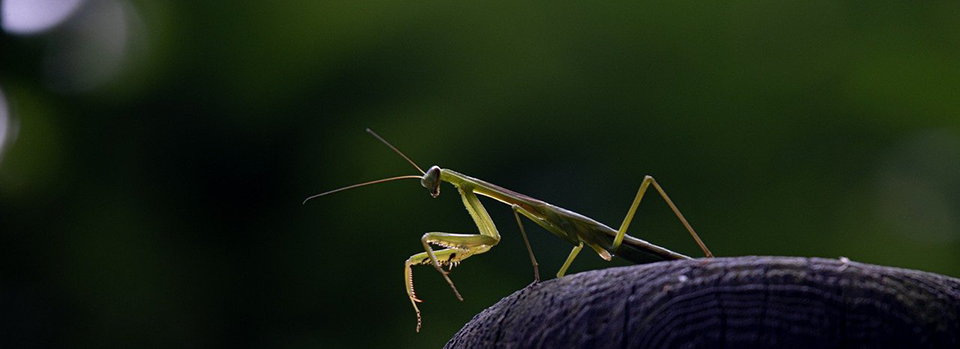
Good for the Garden: Praying mantids prey on insects
K-State entomologist shares why and how these insects should be kept in the home garden
At a glance: Praying mantids are known as guardians of the garden, routinely preying on undesirable insects.
More information: Raymond Cloyd, 785-532-4750, rcloyd@ksu.edu
Related: K-State Horticulture Newsletter | Praying Mantids
April 15, 2024
K-State Research and Extension news service
MANHATTAN, Kan. – A natural way to keep gardens safe from hungry pests is to employ the help of praying mantids. Kansas State University entomologist Raymond Cloyd said this predator of the insect world can be beneficial to a home garden.
“They eat anything they can grab onto with their raptorial front legs,” Cloyd said, “including flies, crickets, moths, butterflies, wasps and caterpillars.”
He said home gardeners can keep an eye out for praying mantid egg cases between November and April. They appear as a hardened, Styrofoam-like egg case, and can adhere to branches, stems, walls, fences, sides of houses and eaves.
Just-emerged mantids, called nymphs, will be present 3-10 weeks after eggs are laid.
“Nymphs that emerge in spring resemble miniature adults,” Cloyd said. “However, not all the nymphs will survive to become adults because they are susceptible to predation by birds, toads, lizards and predacious insects.”
To ensure that the garden has a few praying mantids, their egg cases can be preserved. To do so, Cloyd suggests:
- Remove the egg case and place it into a glass jar with a lid that has at least 10 small air holes. The glass jar can be maintained in the home.
- Wait 4-6 weeks for nymphs to emerge from eggs. To delay emergence, place the jar in the refrigerator and remove 1-2 months before nymphs emerge.
- Once nymphs emerge from the eggs, immediately release the nymphs into the garden so they can feed. Do not release nymphs outdoors when the temperature is below 32 degrees Fahrenheit.
If no praying mantid egg cases can be found in the garden, Cloyd recommends purchasing them from garden centers, nurseries or other mail sources.
Cloyd and his colleagues in K-State's Department of Horticulture and Natural Resources produce a weekly Horticulture Newsletter with tips for maintaining home landscapes and gardens. The newsletter is available to view online or can be delivered by email each week.
Interested persons can also send their garden and yard-related questions to Cynthia Domenghini at cdom@ksu.edu, or contact your local K-State Research and Extension office.
***

K‑State Research and Extension is a short name for the Kansas State University Agricultural Experiment Station and Cooperative Extension Service, a program designed to generate and distribute useful knowledge for the well‑being of Kansans. Supported by county, state, federal and private funds, the program has county extension offices, experiment fields, area extension offices and regional research centers statewide. Its headquarters is on the K‑State campus in Manhattan. For more information, visit www.ksre.ksu.edu. K-State Research and Extension is an equal opportunity provider and employer.